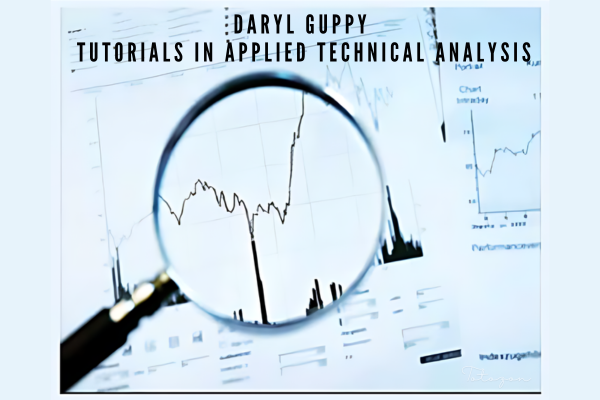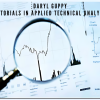Tutorials in Applied Technical Analysis with Daryl Guppy
$4.00
File Size: Coming soon!
Delivery Time: 1–12 hours
Media Type: Online Course
Technical Analysis Guide with Daryl Guppy
In the world of trading, technical analysis is a powerful tool that helps traders make informed decisions. Daryl Guppy, a renowned trader and author, has developed comprehensive tutorials in applied technical analysis that are indispensable for both novice and experienced traders. This article delves into Guppy’s methodologies, offering a step-by-step guide to mastering technical analysis.
Who is Daryl Guppy?
Background and Expertise
Daryl Guppy is a seasoned trader, author, and financial commentator known for his expertise in technical analysis. With over three decades of experience, Guppy has developed unique trading strategies that have gained international recognition.
Publications and Contributions
Guppy has authored multiple books and articles on trading and technical analysis. His work is widely respected and has been featured in various financial publications and media outlets.
Understanding Technical Analysis
What is Technical Analysis?
Technical analysis involves evaluating securities by analyzing statistics generated by market activity, such as past prices and volume. It uses charts and other tools to identify patterns that can suggest future activity.
Why Use Technical Analysis?
Technical analysis helps traders make decisions based on historical price movements and patterns. It is used to identify trading opportunities and manage risk effectively.
Guppy Multiple Moving Averages (GMMA)
Introduction to GMMA
One of Guppy’s most notable contributions to technical analysis is the Guppy Multiple Moving Averages (GMMA). This tool uses two groups of moving averages to identify trends and confirm reversals.
How GMMA Works
GMMA consists of two sets of moving averages:
- Short-term averages: These reflect the activity of short-term traders.
- Long-term averages: These show the activity of long-term investors.
When the short-term averages cross above the long-term averages, it signals a potential uptrend. Conversely, a cross below indicates a downtrend.
Applying GMMA in Trading
Step 1: Setting Up GMMA
To set up GMMA on a trading platform, you need to plot six short-term moving averages and six long-term moving averages. Commonly used periods for short-term averages are 3, 5, 8, 10, 12, and 15 days. For long-term averages, 30, 35, 40, 45, 50, and 60 days are typical.
Step 2: Interpreting the Averages
- Convergence and Divergence: The convergence of short-term and long-term averages indicates potential entry or exit points. Divergence shows the strength of the trend.
- Trend Identification: Use the crossing of short-term and long-term averages to identify the trend direction.
Step 3: Making Trades
- Entry Points: Enter trades when short-term averages cross above long-term averages in an uptrend.
- Exit Points: Exit trades when short-term averages cross below long-term averages in a downtrend.
Other Key Technical Analysis Tools
Candlestick Patterns
Candlestick patterns provide visual cues about market sentiment. Common patterns include:
- Doji: Indicates indecision in the market.
- Hammer: Suggests a potential reversal after a downtrend.
- Engulfing Pattern: Signals a strong reversal.
Relative Strength Index (RSI)
RSI measures the speed and change of price movements. It helps identify overbought or oversold conditions.
Moving Average Convergence Divergence (MACD)
MACD is a trend-following momentum indicator that shows the relationship between two moving averages of a security’s price.
Risk Management Strategies
Setting Stop-Loss Orders
Stop-loss orders help limit potential losses by automatically selling a security when it reaches a certain price.
Position Sizing
Determining the correct position size based on your risk tolerance and account size is crucial for managing risk.
Diversification
Spreading investments across different assets reduces risk and increases the potential for returns.
Real-World Applications
Case Study: Trading with GMMA
Consider a trader using GMMA to trade the S&P 500. By analyzing the convergence and divergence of moving averages, the trader can identify potential entry and exit points, maximizing profits while minimizing risk.
Live Trading Examples
Participating in live trading sessions provides practical insights and helps refine trading skills. Watching how professionals like Daryl Guppy apply their strategies in real-time can be highly beneficial.
Advantages of Guppy’s Approach
Simplicity
Guppy’s methods are straightforward and easy to understand, making them accessible to traders of all levels.
Effectiveness
By focusing on key technical indicators, Guppy’s approach helps traders make informed decisions and improve their trading performance.
Comprehensive Risk Management
Guppy emphasizes the importance of risk management, helping traders protect their capital and achieve long-term success.
Challenges and Solutions
Market Volatility
Market volatility can pose challenges, but Guppy’s strategies include risk management techniques to navigate these fluctuations effectively.
Emotional Discipline
Maintaining emotional discipline is crucial for success. Following a well-defined strategy helps traders avoid impulsive decisions based on market noise.
Conclusion
Daryl Guppy’s tutorials in applied technical analysis offer a valuable resource for traders looking to enhance their skills and achieve consistent success. By leveraging tools like GMMA and other technical indicators, traders can make more informed decisions and effectively manage risk.

Commonly Asked Questions:
- Business Model Innovation: Accept the truth of a legitimate business! Our strategy is organising a group buy in which participants share the costs. We use these cash to acquire popular courses from sale pages and make them available to people with limited financial resources. Despite the authors’ worries, our clients love the cost and accessibility we give.
- The Legal Environment: Yes or No The legality of our activity is ambiguous. While we don’t have specific permission from the course authors to resell the material, there is a technicality at work. The author did not specify any limits on resale when purchasing the course. This legal intricacy is both an opportunity for us and a boon for individuals looking for low-cost access.
- Quality Control: Uncovering the Truth
Getting to the heart of the issue – quality. Purchasing the course straight from the sale page guarantees that all documents and resources are the same as those obtained through traditional channels.
However, we distinguish ourselves by going beyond personal research and resale. It is crucial to note that we are not the official course providers, which means that the following premium services are not included in our package:
- There are no scheduled coaching calls or sessions with the author.
- Access to the author’s private Facebook group or web portal is not permitted.
- No access to the author’s private membership forum.
- There is no direct email support available from the author or their team.
We operate independently, with the goal of bridging the pricing gap without the extra services provided by official course channels. Your comprehension of our distinct approach is much appreciated.
Be the first to review “Tutorials in Applied Technical Analysis with Daryl Guppy” Cancel reply
You must be logged in to post a review.
Related products
Forex Trading
Quantamentals – The Next Great Forefront Of Trading and Investing with Trading Markets
Forex Trading
Forex Trading
Forex Trading
Forex Trading
Forex Trading
Forex Trading
Forex Trading
The Complete Guide to Multiple Time Frame Analysis & Reading Price Action with Aiman Almansoori
Forex Trading
Forex Trading






















Reviews
There are no reviews yet.